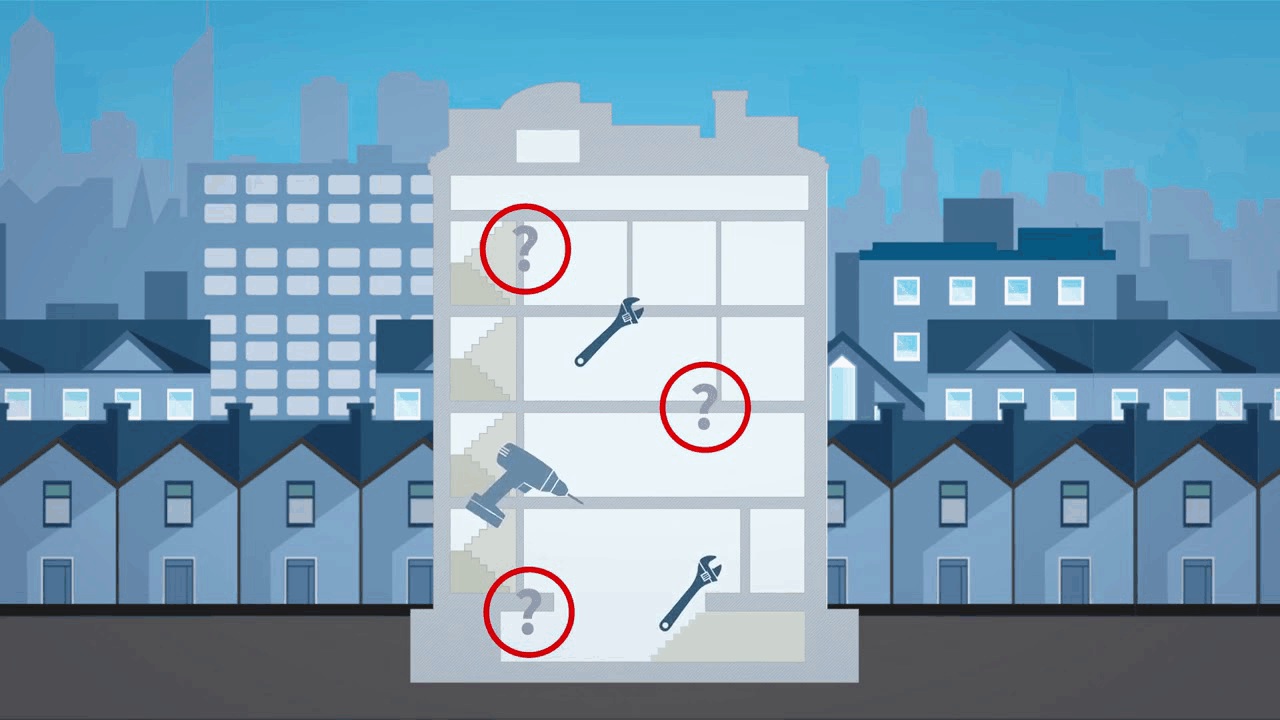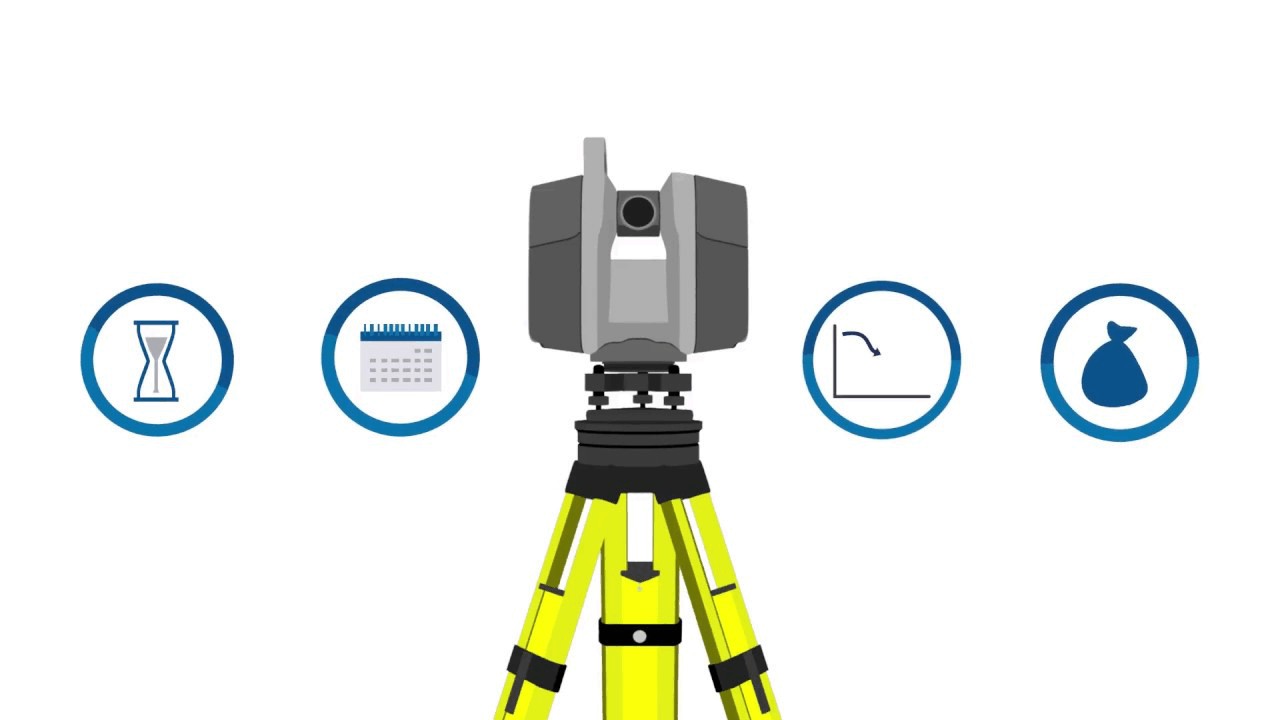3D laser scanning is no longer just a “nice to have” tool. As construction companies of all sizes and specialties experience the undeniable benefits scanning delivers, they’re finding more ways to incorporate scanning into their construction workflows.
It’s widely recognized that 3D laser scanning allows you to acquire accurate and consistent construction build and site condition data—and in a fraction of the time it would take using manual methods. This alone makes scanning a compelling proposition. However, the technology is also becoming more accessible to a wider range of construction professionals.
your team could be using 3D laser scanning.
Until recently, the operation of 3D scanners was reserved only for specially trained technicians and outside service providers. The latest 3D scanners are highly intuitive and loaded with automatic features. As a result of the technology advances, these next-generation scanners can now be operated directly by the individuals who need the data, opening up new applications for the use of scanning and new opportunities to increase efficiency. With the gains you make in accuracy and speed, and the ability to do more with the teams you have, 3D scanning can improve productivity at a time when it’s very much needed across the industry.
Construction productivity has grown just 1% over the past 20 years.
- McKinsey & Company
Yet despite the clear benefits 3D scanning provides, you may still be reluctant to invest in your own scanning solution. For starters, the upfront investment required for a 3D laser scanning solution may feel like an obstacle. And since traditional scanners have required specialized skills to operate, it may seem easier to outsource your scanning needs to the technicians and service providers who already have the tools and the training. Given today’s cost, labor, and schedule pressures, it’s understandable if your construction firm is hesitant to make a sizable investment unless you’re confident it will provide a return on investment (ROI).
If you’re outsourcing laser scanning today—or want to extend your use of 3D scanning and realize the benefits of using it throughout construction—it’s worth taking a closer look at how and when you’re using the service to determine if a purchase may be the better option. Depending on your area, you could be spending as much as $6,000 per day on an outsourced 3D scanning service. And depending upon how many times per year you use the service, you may find you’re spending significantly more on outsourcing than you would on owning the technology yourself.
If your situation isn’t as straightforward, though, there are other ways to evaluate if purchasing a 3D laser scanner is the right decision for your company.
How 3D Scanning Can Pay for Itself
If you’ve been outsourcing 3D scanning, you may not have considered that owning the technology could be possible, let alone the better option for your company. But because new 3D laser scanners don’t have the specialized training requirements that traditional scanners required, your ability to benefit from having a 3D scanner in-house is greater than ever.
Aside from looking at the tool’s ability to pay for itself, you’ll also want to consider how having the technology available when and where you need it could extend its use to more applications, as well as save you money in a number of ways. For example, the daily cost alone of outsourcing could be causing you to limit the number of times you take advantage of 3D scanning and in doing so, limit your ability to fully realize the benefits the tool provides.
On the flip side, if you had a scanner available and accessible to your team, they could use it to easily and efficiently gain the project data they need on a more consistent basis. That ability alone is a game changer and creates a ripple effect of cost-saving opportunities. Here are three ways 3D scanning reduces costs on the back end to make your investment worthwhile.
1. 3D Scanning Can Minimize Rework
When performing layout tasks without the aid of an automated, remotely operated robotic total station (RTS), there are any number of errors that can occur when interpreting a project’s design. The occasional error or omitted piece of data may seem unavoidable, but when an error leads to costly rework, it’s a problem worth solving. Doing the same work more than once or ripping out work that’s already complete is a significant problem in construction, estimated to cost the U.S. construction industry $31 billion in 2018.
When you have unrestricted access to 3D laser scanning, you have the ability to capture accurate as-built conditions every time. Having reliable project data from the get-go sets you up for success by bringing greater accuracy to the models and drawings created for layout and other construction workflows. When you’re armed with high-quality and accurate project information, you’re well-positioned to minimize rework and the extra costs that come along with it.
Just as importantly, when you have your own 3D scanning solution, you can scan on demand from the beginning and all the way through the construction process—not just when a service provider is available. This allows you to quickly catch and resolve any issues or errors as they come up and before they turn into bigger problems down the road, impacting both the budget and schedule.
Download the eBook
2. 3D Scanning Can Shorten Project Schedules
Just one schedule problem can have a domino effect, impacting multiple project workflows and teams. It’s estimated that large construction projects already take an average 20% longer to complete than initially scheduled. Of course, schedule overruns aren’t just about lost time. They often equate to additional costs, too, all of which hurt your bottom line. Any chance you have to protect your schedules then shouldn’t be taken lightly.
The most obvious benefit of 3D laser scanning is its ability to significantly reduce the time spent capturing project data. Regardless of the size of the facility or project, 3D scanning can accomplish in hours what it would take days to produce with a tape measure and manual methods. But if you’re relying on someone else to do the scanning for you, you’re dependent on their schedule, as well as their ability to capture all of the data you need the first time.
When you have your own 3D scanning solution, you don’t have to build your schedule around someone else’s. You can get the scans you need when you need them. And when you’re using a scanner with in-field registration, you can check your work before leaving the site to ensure you’ve captured complete data. You can eliminate the need to schedule additional time for re-scans. Or if you should make an inadvertent mistake or omission, you can quickly revisit the site to get what you need, without having to incur costly schedule delays.
3. 3D Scanning Improves Productivity
Poor productivity has been an area of concern in the construction industry for decades now. While other industries have shown significant improvements, construction still lags behind. This is due in part to a reluctance to retire familiar but outdated manual methods in favor of new tools and technologies.
You already know 3D laser scanning can deliver greater speed, accuracy, and efficiency. But you may not realize that you don’t need outsourced technicians to help you achieve these benefits. When you have an intuitive in-house scanning solution, your project engineers, BIM managers, and layout specialists can collect the data they need, when they need it—right from the field—rather than wait for a specialist. And the use of the data extends beyond their own needs. They’re also able to integrate it with CAD and other software applications to be shared across teams and disciplines.
What could it mean for your productivity if your teams could quickly gather and easily share project data? How could it improve your bottom line if you were able to leverage the power of reliable and shareable project data to improve communication and project performance? When you have a 3D scanning solution in-house that’s accessible to professionals across a range of disciplines, there’s truly no limit to the possibilities and the productivity gains you can experience.
Invest in Your Future with a 3D Scanning Solution
While outsourcing scanning services may have made sense at one time, advances in 3D laser scanning technology are making scanning tools more accessible to a growing number of functional roles and applicable to even more construction workflows. No longer the domain of specialized technicians alone, 3D scanners can now be put into the hands of those who most need the critical project information the scanners provide.
To learn more ways that 3D scanning delivers a return on investment, get the 3D Scanning Made Simple eBook.
About the Author
Follow on Linkedin Visit Website





![[On Demand] Cloud Engine, a point cloud software that has benefits across construction lifecycle](https://play.vidyard.com/krDXXSZc79pBq8qPSi6W2L.jpg)
![[On-Demand Webinar] - Scan Essentials by Trimble, modéliser à partir d'un nuage de points](https://content.cdntwrk.com/mediaproxy?url=https%3A%2F%2Fplay.vidyard.com%2FA8gbz15oHds6JLskjgic5C.jpg&size=1&version=1692731292&sig=26f2e76e220448d9bb5042f0e684237c&default=)
![[On demand webinar] Laser Scanning Myths Busted for Mechanical & Electrical Professionals](https://content.cdntwrk.com/mediaproxy?url=https%3A%2F%2Fplay.vidyard.com%2FEbAQRaubYhCRh1H5qdMoYZ.jpg&size=1&version=1692731300&sig=67ee3bbda98878ba84acb3d96b1ce197&default=)













